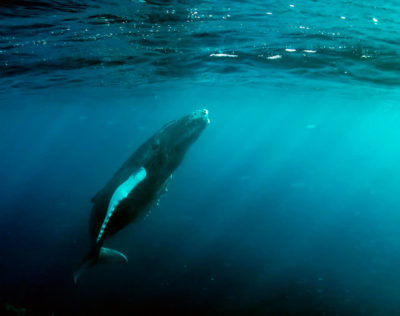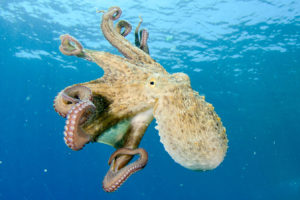A humpback whale. Christopher Michel/Wikimedia Commons
After being hunted nearly to extinction in the early 20th century, a population of humpback whales in the southern Atlantic Ocean has almost entirely recovered, according to a new study. In the late 1950s, just 440 western South Atlantic humpbacks remained. Today, scientists estimate the population at nearly 25,000 individuals.
“This is a clear example that if we do the right thing, the population will recover,” Alexandre Zerbini, a whale expert with the Seattle Marine Mammal Laboratory and lead author of the new study, told USA Today. “I hope it serves as an example that we can do the same thing for other animal populations.”
There are seven genetically distinct populations of humpback whales in the Southern Hemisphere. This group in the western South Atlantic breeds off the coast of Brazil and then travels to Antarctic waters in the summer, passing by the island of South Georgia, a British territory. According to the BBC, industrial whaling operations began on South Georgia as early as 1904, focusing on humpbacks swimming close to shore. By the 1920s, the species’ population had plummeted, with boats catching just a few dozen individuals a year. South Georgia whalers then shifted to catching blue, fin, sei, and minke whales, yet the island’s whale industry continued operating until the global moratorium on whaling in the 1980s.
“But we didn’t really measure anything until the 1980s, and it wasn’t until we did the first proper assessment at the start of the 2000s that we realized just how well they were recovering,” Zerbini said. The research by Zerbini and his colleagues was published this week in the journal Royal Society Open Science.



